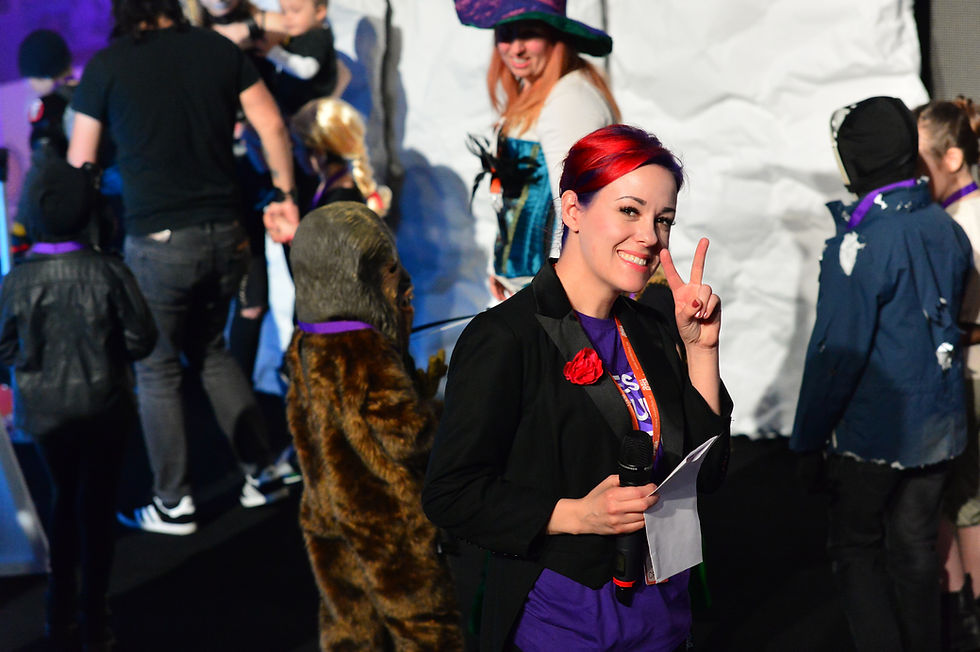Burnout tips: find the balance and be creative in non-pressure environments
- The Goose

- Mar 30, 2022
- 3 min read
Updated: Aug 24, 2022

“Even though burnout is something that happens a lot in the industry, I don't want other people to go through it, so it’s important to talk about it.” Sofie Wikström learned a lot from her own experience. She thinks it’s vital to share her tips and learnings with other game makers.
One of the hardest situations of Sofie’s burnout was her creative block, not only at work but also at home. Like many artists, creativity permeates her whole life.
Switch creative areas at home. “I draw at work, so when I get home, I do other creative activities, such as knitting, crocheting, sewing, and gardening.
Be creative on the side in a non-pressure environment. “I got myself a house with a garden to take care of, this allowed me to be creative without pressure put on myself."
Find a way to shut yourself off work. “I used to play Dungeons and Dragons because I couldn't think about work or anything else when I was playing it. Pretending to be someone else for a few hours helped me a lot.
Don't take work home. In a passionate industry like video games, it's easy to become a workaholic and work around the clock.
Limit the pressure you put on yourself. One big challenge for artists is that they have to be creative, but with the pressure of producing quality stuff every day.
Finding the balance is the key. “It's all about getting out of that zone and shutting off from work, but still allowing yourself to be creative in different ways and relaxing environments.”
Listen to your body and mind. Be aware and observant of the symptoms and signals in your mind and body. Don't underestimate it.
Speak about it openly. Don't hide your frustration or burnout process. It’s not bad to show vulnerability at the office. It will open a discussion, help the teamwork, and evidence issues.
Identify signs of burnout in colleagues. “Now that I lead teams, I try to be very observant, and I try to pick up on signs of burnout.”
Mix the work activities. Try to change between responsibilities(drawing, prototyping, etc.) Mix them and don’t do the same thing for more than 4 or 6 hours.
Promote an environment where it is safe to make mistakes. “You have to be allowed to make mistakes, otherwise you can't learn.”
Scrum and Agile Sofie’s leadership alleys

Projects with bad communication and the wrong approach to game production flow were triggers for Sofie's burnout experience. Now, as an Art Director, her drive is to improve it, and she found a way with Scrum and Agile.
After a failed project, she dedicated 2 months to studying Scrum and Agile courses and pitched a new work system to the producers: Cross-Disciplinary Teams (concept artists, 3D artists, designers, and coders) with assigned features and team identity.
“I wanted to try the Cross-Disciplinary Teams because I wanted to avoid the ‘It's your fault’ situation, and I wanted teams to take and feel ownership of the game product. So it's not about who's job it is anyway, anymore. It's about what does the team takes responsibility for? You all own this feature.”
This workflow consists of planning Sprints and working in iterations led by 3 directors (Art, Tech, and Design). The leads' job is not to go into the project with a list of tasks and the final image in their heads, but to see what ideas the teams have and make decisions based on that, explained the Art Director of The Station - A Thunderful Studio.
In practice, what do directors do? Sofie Wikström summarizes:
Give the teams loosely defined user stories rather than tasks. Putting down tasks for 15 people is impossible. Directors become a funnel because all communication has to go through them. It’s better if each member creates the tasks based on their needs.
Tell the team what we expect of the feature once it's produced. It’s more about identifying what’s the best for the project than forcing my vision. That stimulates ownership.
Discuss features from a very broad perspective. For example:
What do we think this feature will be?
How do we want to split it?
How many times do we want to iterate on it?
What's the minimum viable product? (the simplest version of this feature)
Make an effort evaluation. Is it high or low code, design, or art?
“As an Art Director, half of my job is planning and looking ahead while making sure everyone has what they need to be able to be productive. The other half is exploration. Give feedback to my artists, help them develop as artists (pushing and challenging), and provide an environment that allows them to make mistakes and learn from them.”
Sofie Wikström is one of our speakers at our free online event, Friday Stories and you can learn more about her story over at our other blog here!





Comments